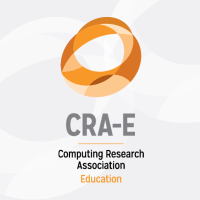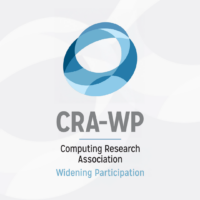New ADA Title II Rule on Accessibility Impacts Computing Departments
By Richard E. Ladner, Professor Emeritus, Paul G. Allen School of Computer Science and Engineering, University of Washington; and Terrill Thompson, Accessibility Consultant, AccessComputing, UW-IT Accessible Technology Services, University of Washington
On April 24, 2024, the United States Department of Justice issued a new rule called “Nondiscrimination on the Basis of Disability; Accessibility of Web Information and Services of State and Local Government Entities” [1]. This rule, which covers web content and mobile apps, was published under Title II of the Americans with Disabilities Act (ADA) of 1990. In 1990, the web and mobile devices barely existed. This rule brings up to date the requirement of Title II that state and local government entities should be accessible. State entities include public universities and colleges, as well as public school districts. Depending on the size of the state or local government entities, compliance is required by April 24, 2026 (for entities with population size 50,000 or more) or April 26, 2027 (for entities with population less than 50,000).
In the following sections we provide the salient details of the rule and describe the impact on public universities and colleges, and more specifically on computing departments.
Salient Details of the Rule
The rule adopts the Web Content Accessibility Guidelines (WCAG) 2.1 Level AA as the technical standard for web content and mobile app accessibility [2]. The principles, guidelines, and many of the success criteria of WCAG 2.1 apply to a variety of technologies, including websites, web applications, mobile applications, videos, and digital documents. They are designed to ensure digital user interfaces are accessible to a full spectrum of users, including blind people, who may access digital content through audio (screen readers) or tactile (refreshable Braille) interfaces; deaf or hard of hearing people, who may require captions for video and transcripts for audio; people with limited movement, who may use the keyboard, speech input, or other input technologies rather than a mouse or touchpad; or people with speech disabilities, photosensitivity, learning and cognitive disabilities, among others. All of these individuals can access and use websites, digital documents, and mobile applications, if these resources are created properly for accessibility.
As mentioned above, the rule applies to websites, conventional electronic documents, and mobile applications. These are defined as follows in the rule:
- “Web content means the information and sensory experience to be communicated to the user by means of a user agent, including code or markup that defines the content’s structure, presentation, and interactions. Examples of web content include text, images, sounds, videos, controls, animations, and conventional electronic documents.”
- “Conventional electronic documents means web content or content in mobile apps that is in the following electronic file formats: portable document formats (‘PDF’), word processor file formats, presentation file formats, and spreadsheet file formats.”
- “Mobile applications (‘apps’) means software applications that are downloaded and designed to run on mobile devices, such as smartphones and tablets.”
In defining the specific requirements for public entities, the rule frequently refers to web content or mobile apps “that a public entity provides or makes available, directly or through contractual, licensing, or other arrangements.” This extends the requirements beyond content created by public entities (e.g., websites, digital documents) to include third-party applications. Public universities use thousands of third-party websites and mobile applications, all of which should be accessible. At the other extreme, an individual faculty member might develop their own website for a course they are teaching. Even though there may be no disabled students in the class, the website must be accessible according to the rule.
There are some very specific exceptions to the rule:
- Archived web content. Must meet all four conditions:
- Created before the compliance date.
- The sole purpose is for reference, research, or recordkeeping.
- The content is kept in a special area for archived content.
- The content has not been changed since it was archived.
- Pre-existing electronic documents (e.g., PDFs)
- Pre-existing social media posts
- Content posted by unaffiliated third parties
- Individualized, password-protected documents
These exceptions are fairly narrow, but do allow a university to preserve inaccessible material for research or other purposes. Comments posted on university social media websites by outsiders would not have to be accessible. There is some ambiguity in the exceptions for which we do not have an answer. For example, if the library at a public university provides access to private digital libraries, such as IEEE Xplore or the ACM Digital Library, then surely, the digital library interfaces should be accessible, but what about their articles that are typically PDFs? Are these digital libraries actually archives? The articles that are put in the digital library before the compliance date of the rule seem to be archived material, but what about articles that enter the digital library after the compliance date?
The Department of Justice shares enforcement authority with the Department of Education under Title II of the ADA. Neither agency actively polices ADA violations, but rely on individuals to file complaints. Most disability discrimination complaints against higher education institutions are filed with the Department of Education Office for Civil Rights, although individuals can also file private lawsuits. Once a complaint is filed, it can take a long time before it is reviewed, investigated, and settled or adjudicated.
Impact on Public Universities and Colleges
In a sense this rule is the outgrowth from past individual ADA complaints about access to university digital resources. One of the most prominent was the 2014 complaint by the National Association of the Deaf about the lack of access to video course materials and other official activities at the University of California, Berkeley [3]. This case was settled in 2021 with a consent decree that put a tremendous burden on the university to make its web content and electronic documents accessible. This new rule codifies some of the outcomes of the UC Berkeley case and adds mobile apps. Now, every public university has to meet similar accessibility requirements to those required of UC Berkeley in their consent decree. From prior research, universities have been improving the accessibility of their main websites [4], but the accessibility status of all the universities’ web and mobile apps is unknown.
Our university, the University of Washington (UW), has taken several steps toward compliance in two years. It has created a new position of Deputy ADA Coordinator for Digital Accessibility to lead the effort toward compliance. It has created a task force to coordinate a university-wide response. The task force will first assess the current state of accessibility in key areas, then develop action plans for the response. It is also responsible for implementing the action plans. The university has purchased an enterprise web accessibility checker, PDF remediation software, and a robust new curriculum on digital accessibility that will be available to everyone in the UW community. This response is predicated on the fact that this rule will impact every faculty member, in every class, and most units in the university that support teaching and research. The University of Washington has done a great job of making its own centrally supported websites, YouTube channels, and other information outlets accessible. However, having all departments and their faculty do the same will be a major challenge.
Impact on Computing Departments
Computing departments have a special role to play in making sure that the accessibility requirements of this rule can be efficiently satisfied. First, just like all faculty at the institution, computer science faculty have to make sure their own courses are accessible. This could be done with the help of university or departmental resources that should be developed in response to the rule. A first step would be to do an audit of all the web and mobile apps that are used by faculty in courses to assess their accessibility. If any of the inaccessible ones are home-grown, then a plan to remediate them to make them accessible can be created. If they are third-party, then contact the third-party to notify them of the problem and request a roadmap to address their accessibility shortcomings, or switch to a more accessible app that has comparable functionality.
Second, faculty who teach courses about web and app design should include in their courses how to design and build accessible websites and mobile apps. More generally, computing faculty can teach about accessibility using the resources from Teach Access [5] and the new online book, Teaching Accessible Computing [6]. Even operating systems courses could have a unit on how to efficiently integrate access technologies such as screen readers into a working system.
Finally, this rule raises opportunities for more computing research. For example, many of the tools currently used for creating PDFs, including Overleaf and Google Docs, do not create accessible output; and the tools and processes needed for remediation of PDF are difficult to use. There are probably millions of inaccessible PDFs that need to be remediated for accessibility. How can that be done efficiently? Modern machine learning algorithms could be developed to support this conversion by automatically creating alternative text for images, automatically recognizing headings and other structural elements and tagging them appropriately, and so on. Already, speech recognition can be used to create captions in videos, but improvements are still needed in this area. Machine learning could also be applied to other challenges, such as automatically adding audio descriptions to videos or to complex data visualizations to make these media more accessible to blind users. Also, automatic accessibility checkers exist for websites and mobile apps, but these could be improved to check for functional user experience and usability, not just technical accessibility; and a new generation of assistive technologies could be developed that are able to adapt to the needs of individual users and provide efficient and effective access to any user interface they encounter, without depending on content authors and the developers of those interfaces to code everything properly for accessibility.
Summary
The new Department of Justice ADA Title II rule on digital accessibility presents a real challenge to public universities and colleges. At the same time, it presents opportunities to improve the computer science curriculum by having more emphasis on accessibility. Additionally, it creates new research problems in automating or semi-automating the development of accessible websites and mobile apps, and the automatic remediation of inaccessible electronic documents.
Acknowledgment
This material is based upon work supported by the National Science Foundation under Grant No. 2137312. Any opinions, findings, and conclusions or recommendations expressed in this material are those of the authors and do not necessarily reflect the views of the National Science Foundation.
References
- Nondiscrimination on the Basis of Disability; Accessibility of Web Information and Services of State and Local Government Entities. US Department of Justice. https://www.federalregister.gov/documents/2024/04/24/2024-07758/nondiscrimination-on-the-basis-of-disability-accessibility-of-web-information-and-services-of-state, retrieved 8/5/2024.
- Web Content Accessibility Guidelines (WCAG) 2.1 Level AA. https://www.w3.org/TR/WCAG21/, retrieved 8/5/2024.
- Justice Department Secures Agreement with University of California, Berkeley to Make Online Content Accessible to People with Disabilities. November 21, 2022. https://www.justice.gov/opa/pr/justice-department-secures-agreement-university-california-berkeley-make-online-content, retrieved 8/5/2024.
- Thompson, T., Comden, D., Ferguson, S., Bowker, D., Burgstahler, S., Smith, J., Moore, E. (2024). Predictors of Postsecondary Web Accessibility, 2012 to 2022. Journal on Technology and Persons with Disabilities. Volume 12. https://scholarworks.calstate.edu/concern/publications/gb19fd48d, retrieved 8/5/2024.
- Teach Access. https://teachaccess.org/, retrieved 8/5/2024.
- Oleson, A., Ko, A.J., and Ladner, R. (2024). Teaching Accessible Computing. https://bookish.press/tac, retrieved 8/5/2024.









